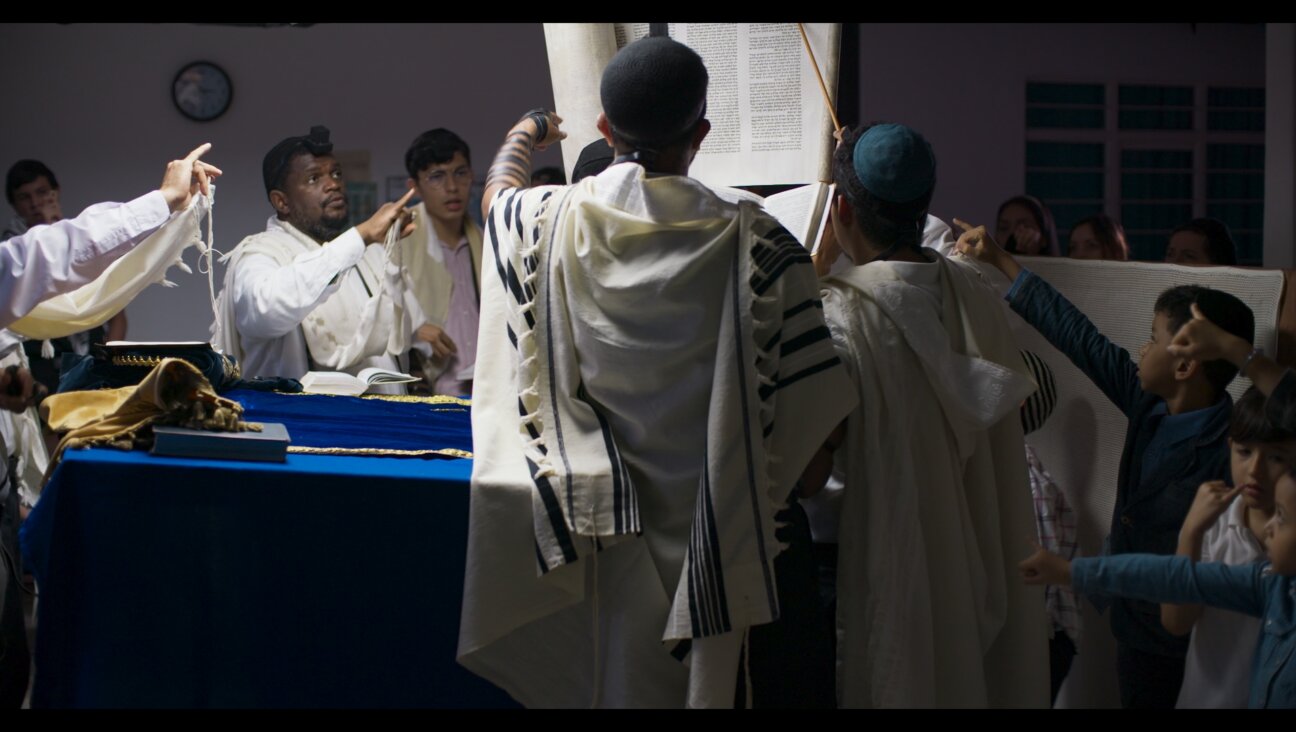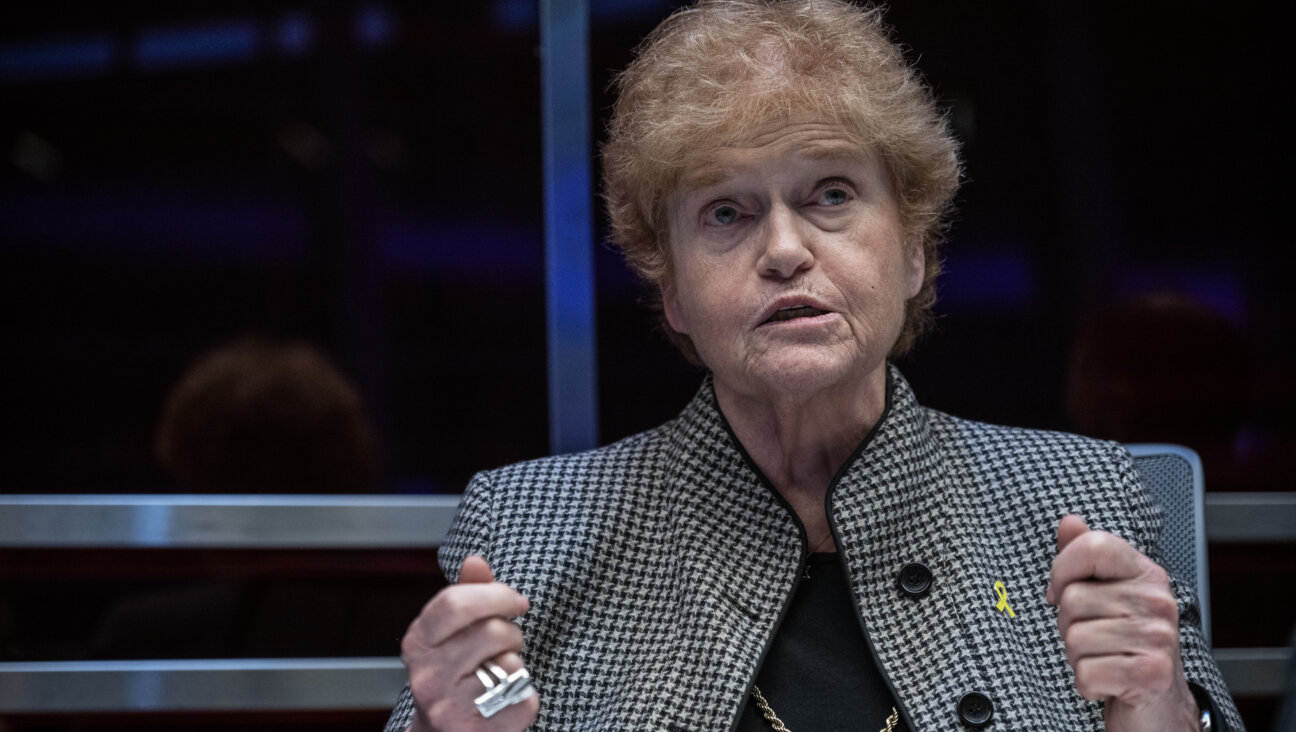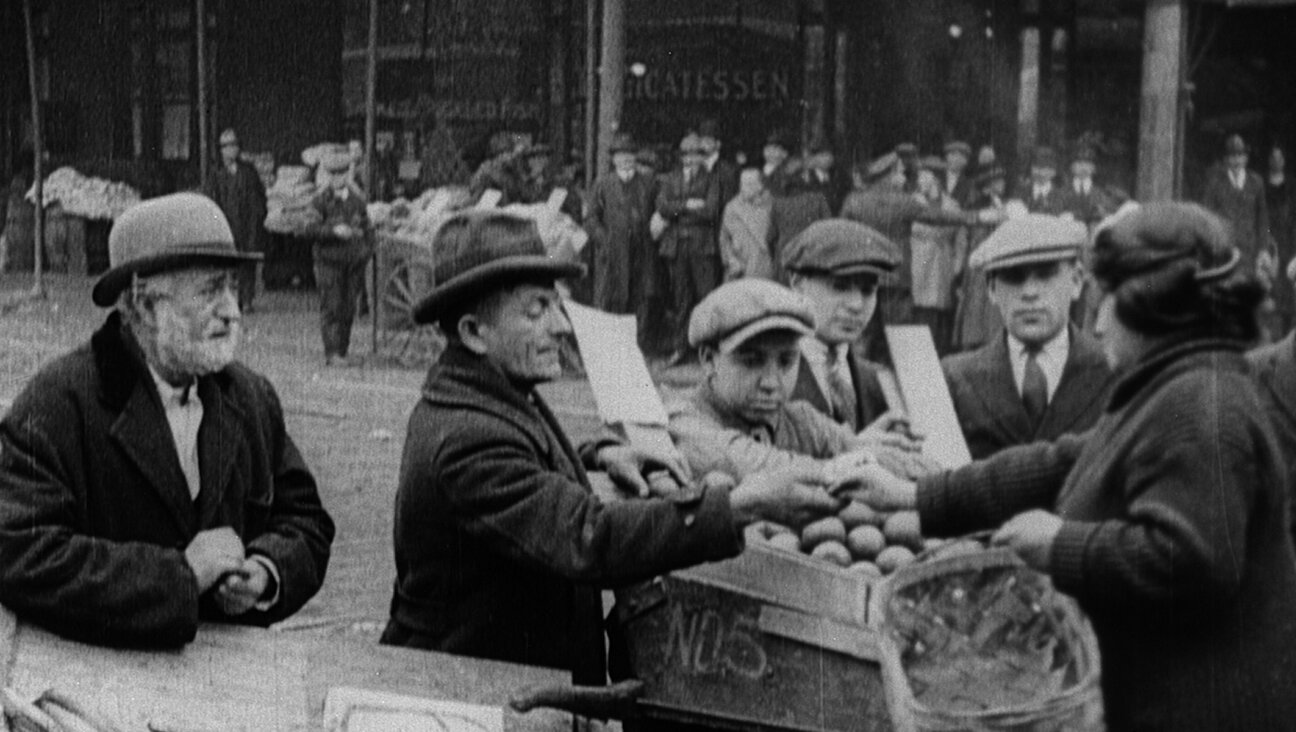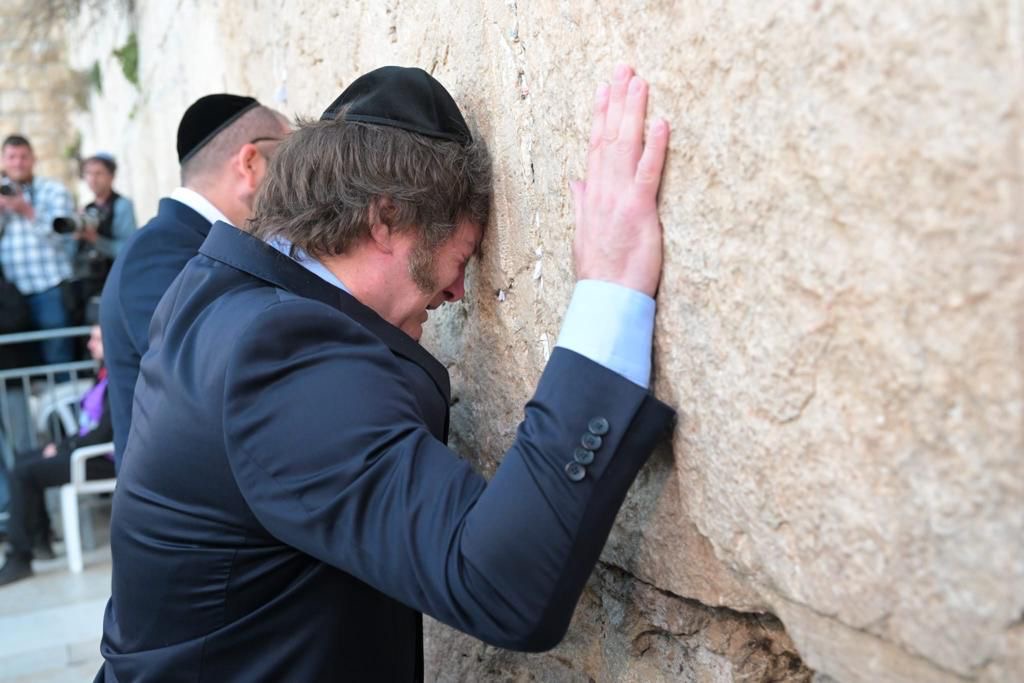After 25 Years, Soviet Emigrés Still Strangers
This is the first in a three-part series on the challenges faced in America by Jewish immigrants from the former Soviet Union.
KANSAS CITY, Mo. — Her freshly painted nails and carefully coiffed hair give Maria Abramov the air of a women who has things in order. Sitting in the clean back room of her business, Salon Flhair, on a strip mall in the suburbs, Abramov marveled at how far she has come since 1980, when she arrived here as a Jewish refugee from Moldova.
The legacy of Abramov’s life in the Soviet Union, however, is never far from the surface.
The label of “Jew” that Abramov, 58, carried around in her Soviet passport has given her a lasting sense of belonging to the Jewish people. But even now, almost a quarter-century after coming to America, she never has managed to assimilate into the Kansas City Jewish community.
A major barrier has been her strictly secular sense of Jewish identity, a product of having lived for 34 years under the enforced atheism of Soviet society that left her out of place in an American Jewish community organized largely around synagogue participation. Like many of the Soviet Jews who came to this city, she has allowed the free synagogue membership, which she received when she arrived, to lapse.
“It was hard,” Abramov said, during an interview with the Forward a few weeks ago. “I cannot come here and all of a sudden believe in God. We are still atheists. We are Jewish, but this is not by religion, it’s by nationality.”
Abramov is one of some 1,300 Jewish émigrés who came to Kansas City from the former Soviet Union during the past three decades — a small, but revealing slice of the almost half-million Jewish immigrants who have come to America since the 1970s. The fight to free Soviet Jewry sparked a national movement, which galvanized American Jews and achieved its success with the crumbling of Soviet rule and the mass exodus of Jews to Israel and the United States.
Another important chapter in the history of the Soviet Jewry movement closed quietly earlier this month. On October 1, in Kansas City and 24 other American cities, the Hebrew Immigrant Aid Society closed down its programs for resettling immigrants, noting that the overwhelming majority of those who wished to emigrate from the former Soviet Union have arrived. Recent studies suggest that the younger generation of immigrants have achieved financial security. But when measured against the initial goals of integrating the new arrivals into the fabric of American Jewish life, the organized community’s resettlement efforts have been a disappointment to many.
As the immigrants have settled into their new lives, they and their American hosts have had difficulties finding common Jewish ground — a result of the baggage that each side carried into the relationship.
“Basically I call it mutually broken expectations,” said Sam Kliger, director of Russian Jewish community affairs at the American Jewish Committee, the only national Jewish organization to have a high-ranking officer dedicated to Russian Jews.
In at least some parts of the country, difficulties in bridging the gap have caused both sides to withdraw into their own corners. In Kansas City, for instance, when the resettlement program ended October 1, the Jewish federation also eliminated the position of the one staff member who was working to bring Soviet Jews into Jewish communal life.
“The whole concept of welcoming Russians is not very fashionable in the American community,” said Laura Breitberg, now the only Russian-speaking professional in the Jewish Federation of Kansas City. “[The Americans] are tired.”
In many ways, the community of Soviet Jews in Kansas City is significantly different from the larger and better-known immigrant experience in New York City, where close to half of all Soviet Jews in the United States live. Kansas City émigrés were generally offered more opportunities to join the Jewish community and had closer contact with other segments of the Jewish populations. For that reason, the continuing struggle in Kansas City to integrate them is particularly telling.
A new national study, combined with anecdotal evidence from places like Kansas City, reveals that a gap exists not only between the social activities of the American and Jewish communities, but also in the very idea of what it means to be Jewish.
In the Soviet Union, Judaism was a matter of ethnic identity devoid of any synagogue affiliation, and it appears to have stayed that way for immigrants after they immigrated.
According to a new report based on the findings of the 2001 National Jewish Population Study, only 28% of Soviet immigrants belong to a synagogue, compared with 48% of the overall Jewish population. At the same time, the report, “Jewish Immigrants in the United States,” produced by the United Jewish Communities and released last month, suggests stronger levels of ethnic identification among immigrants. Seventy-one percent said they have mostly Jewish friends, compared with 51% of American Jews. The study found that 91% of married immigrants were married to other Jews, while the same is true of 67% of American Jews.
The UJC study does suggest that despite their experiences in the Soviet Union and continued isolation from the established Jewish community, a significant number of Soviet immigrants, like other American Jews, are opting to express their religion in private ways, like fasting on Yom Kippur and holding Passover Seders. The study also found that 71% of immigrants have attended synagogue once in the last year, while only 35% of the same respondents did so when they were 10 years old. The study does not divide respondents by age, leaving it unclear whether the increase in synagogue attendance is simply a product of older Soviets having grown up in a country that forbade them to attending synagogue or that reflects a cross-generation shift.
What does seem clear is that increases in religious practices and occasional synagogue attendance have not erased the prevalent disconnect between American and Soviet Jews.
Segments of the American Jewish community have voiced disappointment that their dreams for the Soviet Jews were not borne out, while Soviet leaders have expressed feelings of being abandoned once they arrived.
Ed Tranin, an architect in Kansas City, remembers the excitement as he first became involved with the Soviet Jewry movement in the early 1980s, when he went out to help convince synagogues to get involved.
“Through the rose-colored glasses, when they were first coming, I imagined them being part of our Jewish community,” said Tranin, who became head of the Jewish federation’s task force on resettlement.
As was true in other parts of the United States, in Kansas City the Soviet Jewry movement served as an important training ground for future leaders. Tranin and other young Jews in Kansas City organized furniture drives and made sure that a Jewish family and a synagogue adopted each new family. In those early days, though, the emphasis was less on religious opportunities than on helping the newcomers to survive in their new environment.
Current studies show that economic need is still a pressing issue in the immigrant community, which most estimates have numbered at about a half-million people. (“Jewish Immigrants in the United States” claims 227,000 Jews from the former Soviet Union had immigrated to this country since 1980, but this is generally agreed to be an underestimate. HIAS alone has brought 340,000 Soviet Jews to the country since 1980, and this only accounts for immigrants categorized as refugees.) The UJC report found that 38% of all immigrants are living below the federal poverty rate, more than five times the rate of 7% in the overall Jewish population. While this is a serious continuing issue among elderly immigrants, the next generation shows every sign of making their own way. Only 5% of nonelderly immigrants fall below the poverty line.
Many of the immigrants rapturously recalled the financial help and fully furnished apartments to which they arrived. Still, the tensions were quick to form.
For many American Jews, the complete ignorance of Judaism among the newcomers, along with other cultural differences, came as a rude jolt.
Among the immigrants, the ways of the Jewish community were mystifying. The notion of paying dues or volunteering time was not something they were familiar with, nor was either of the languages — English and Hebrew — spoken at the synagogues.
In 1994, the Kansas City federation began to address this issue by hiring Svetlana Sorkin, the Russian-speaking professional whose position was eliminated this month. She led Russian Sabbath dinners and holiday services, and set up a Russian table at federation fundraising drives. But in Kansas City, Breitberg says, oftentimes many participants in the federation-sponsored activities were elderly immigrants with little else to do.
In Kansas City, there were also outreach efforts to the younger generation, including scholarships to the Jewish day school (today there are 22 children from Soviet families enrolled), and financial help for synagogue-based Hebrew schools. But in many cases, these outreach efforts did not succeed in helping younger immigrants forge a Jewish identity — either secular or religious.
For example, Abramov — like 78% of the émigrés across the country — said that it is important to her that her child marries a Jew, and she herself is very close to other Jewish immigrants, but her 26-year-old son, Gene, who now lives in Boston, has no ties to Judaism.
“I can’t think of a single Russian family where their children will be regular congregants at the synagogue,” 21-year-old Leonid Khayet said.
Khayet himself has not followed the paths of his peers. He had his bar mitzvah in Israel and has gone on to start the first Israel advocacy group on campus of the University of Kansas, where he has just started his senior year. He has passed this ethos along to his mother, who did not even know what Hanukkah was when they first arrived from Belarus.
Breitberg said there still are many youngsters who might be candidates for joining the community, but that this is less likely to happen now that Sorkin’s position was cut, along with the special funding for Russian programs.
“We needed to be more patient, and not feel that we failed,” Breitberg said.
A message from our Publisher & CEO Rachel Fishman Feddersen

I hope you appreciated this article. Before you go, I’d like to ask you to please support the Forward’s award-winning, nonprofit journalism so that we can be prepared for whatever news 2025 brings.
At a time when other newsrooms are closing or cutting back, the Forward has removed its paywall and invested additional resources to report on the ground from Israel and around the U.S. on the impact of the war, rising antisemitism and polarized discourse.
Readers like you make it all possible. Support our work by becoming a Forward Member and connect with our journalism and your community.
— Rachel Fishman Feddersen, Publisher and CEO























